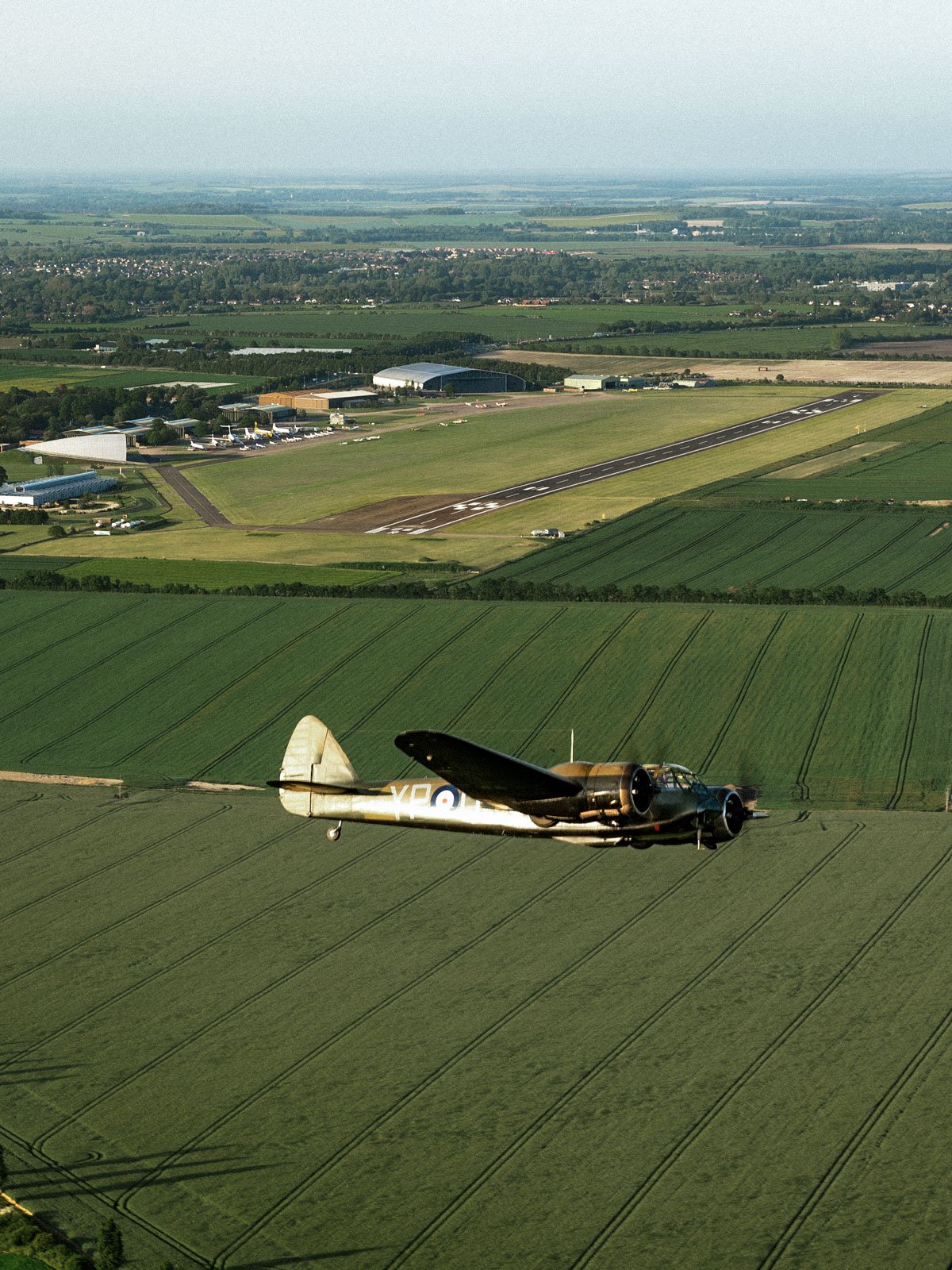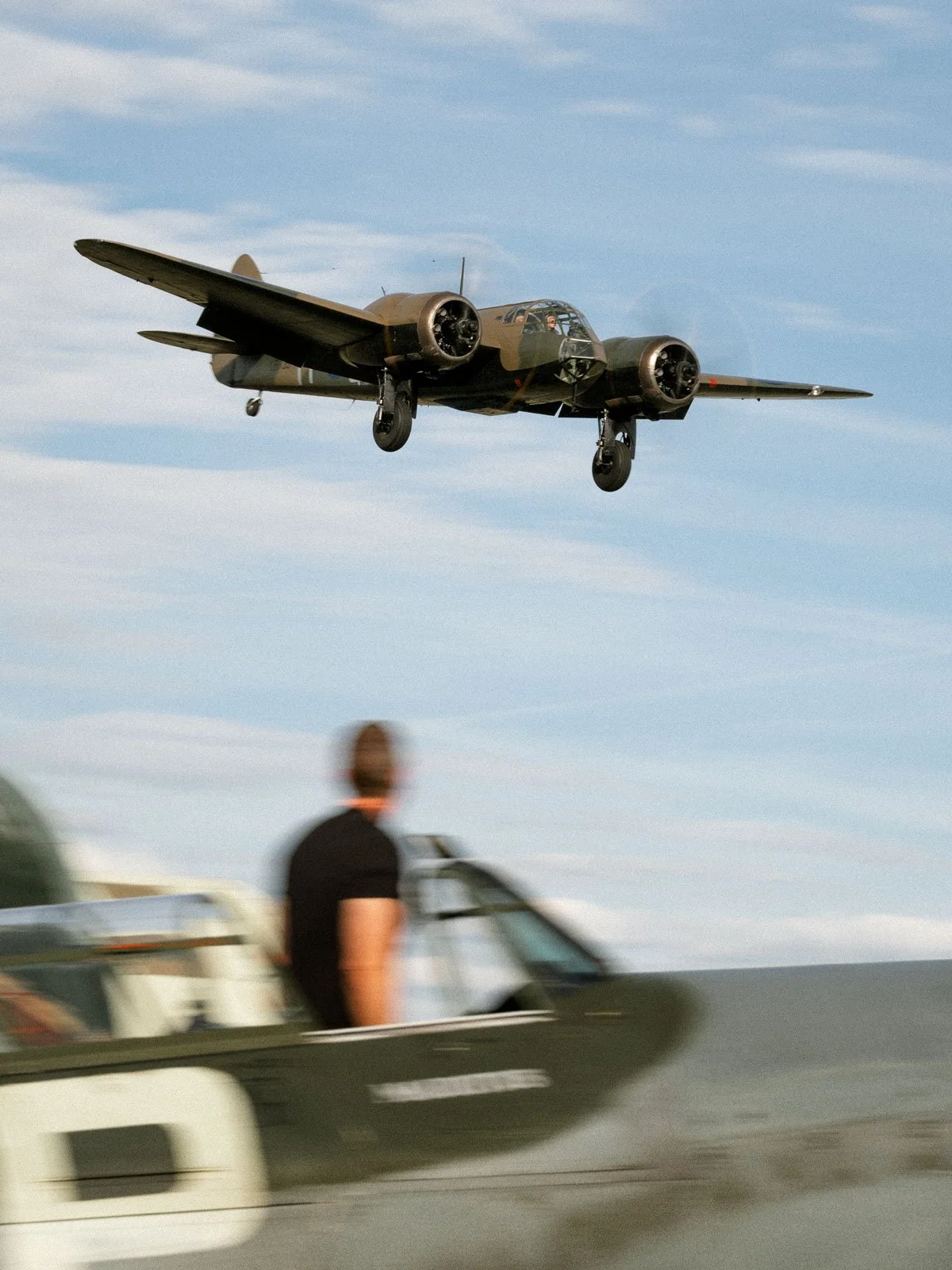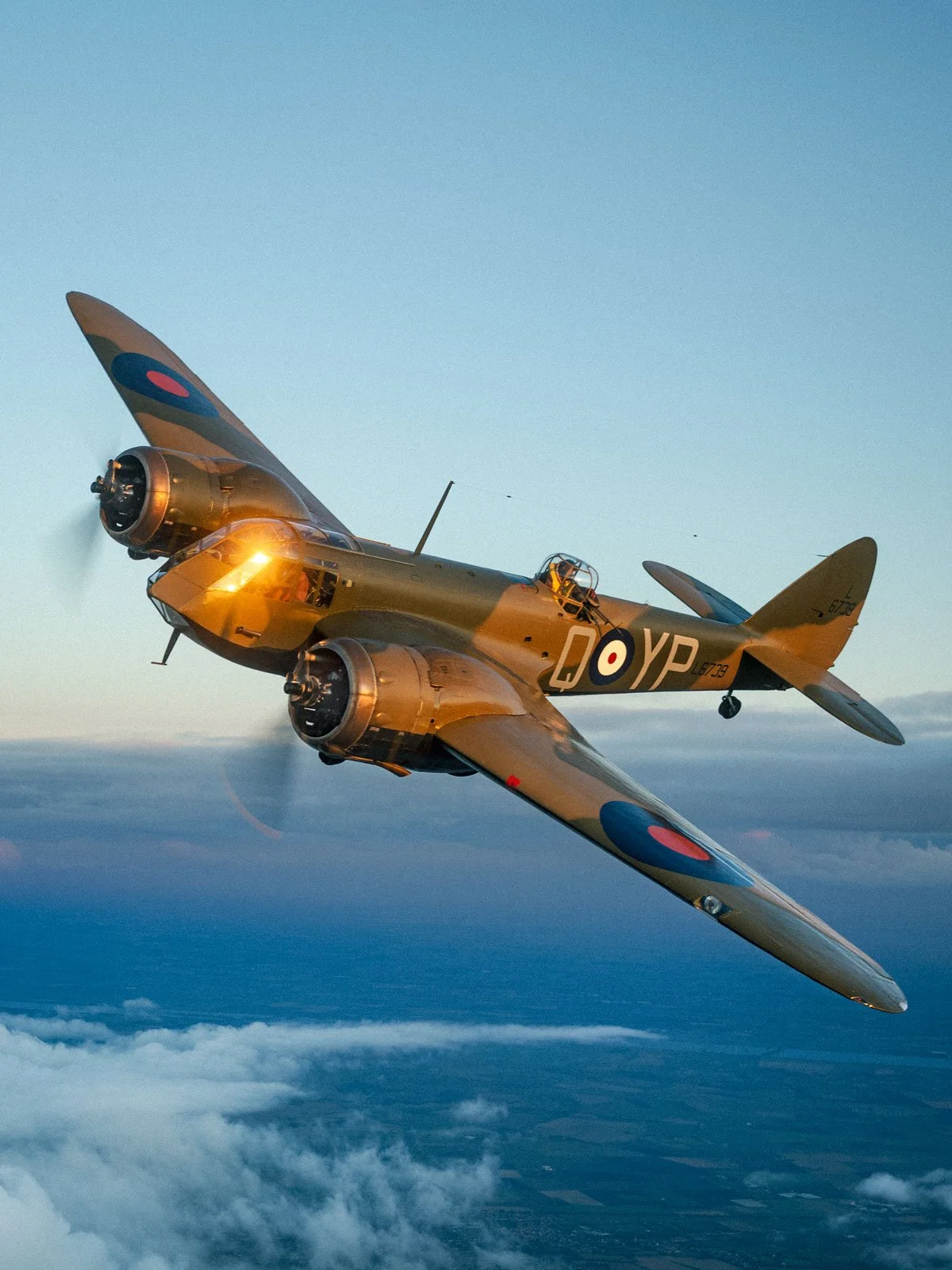BRISTOL BLENHEIM IF L6739
Blenheim L6739
Bristol Blenheim Mk.IF L6739 (G-BPIV) is the world’s only flying example of over 4,400 of this historic type built. In 1934 the owner of the Daily Mail, Lord Rothermere, challenged British aircraft manufacturers to design and build a small, high-speed aircraft which could accommodate two crew and six passengers – with the hope of it becoming the world’s fastest civilian aircraft. Frank Barnwell and Roy Fedden of the Bristol Aeroplane Company responded to this challenge with the Type 142 which first flew the following year. It quickly became clear that this eight-seat, twin-engined aeroplane was faster than any fighter in the Royal Air Force inventory at the time – which unsurprisingly caught the attention of the Air Ministry. They quickly ordered an initial batch of 150 of the type, accordingly modified to meet a light bomber specification, the first example of which made its maiden flight from Bristol’s Filton works in June 1936. The Blenheim became the mainstay of the RAF’s bomber force in the early days of war, with Winston Churchill comparing their crews to the ‘Charge of the Light Brigade.’ The type is unique in the RAF’s history, having served in every theatre of WWII whilst performing a wide variety of roles.
Most of G-BPIV’s airframe was constructed under license in Canada by Fairchild. It entered Royal Canadian Air Force service in 1943 where it was known as the Bolingbroke and saw about three years’ service before being struck off charge and stored on a farm for many years. In the mid-1980s the remains of this aeroplane were delivered to the Strathallan Collection in Scotland before passing to Graham Warner and the Aircraft Restoration Company at Duxford in 1988 where a full restoration to airworthy condition began. The aircraft was restored to resemble a later ‘long-nosed’ Blenheim IV, and a maiden flight occurred in 1993. Unfortunately, a decade later the aircraft suffered damage in a landing accident – undeterred, the team set about rebuilding the Blenheim.
Early in the project, the decision was taken to convert the Blenheim to an earlier ‘short-nosed’ example to present a different looking airframe to audiences. The team had had in its possession since 1992 a viable MkI nose section - L6739 - with an interesting story of its own. L6739 entered RAF service on 2nd September 1939, the day after World War Two began. It saw service as a night fighter with No. 23 Squadron RAF for over a year, throughout the Battle of Britain, before being returned to the Bristol Aeroplane Company at the end of 1940 and largely scrapped. The nose for the aircraft was spared this treatment and once the war had ended, an innovative employee of Bristol’s – Ralph Nelson – was allowed to purchase the nose, which he then converted into an electric car and drove successfully for many years before it suffered a fire. Ralph had kept many of the original components not required for use in the car and so the nose became a viable candidate to get the Blenheim back in the air and was refitted in due course – the original tax disc can still be seen fitted as a small nod to its past life!
After an 11-year restoration and some 25,000 voluntary man hours, the Blenheim flew again in November 2014 in the hands of John Romain. The aircraft was in demand the following season, as 2015 marked the 75th anniversary of the Battle of Britain and G-BPIV could be seen at many of the nation’s aerial commemorations. 2016 saw L6739 participating in the filming of the Christopher Nolan production ‘Dunkirk’ representing all the light bombers in service at that time. Since its restoration, the Blenheim has become a prize winner in the coveted ‘Freddie March Spirit of Aviation’ concours event at the Goodwood Revival on three occasions – achieving first place in both 2015 and 2017, and third place in 2018. Owing to the COVID-19 pandemic and the subsequent reduction in the number of events, combined with staggering operating costs, the Blenheim spent nearly 1000 days out of the skies before a triumphant return to the air in August 2022. The aircraft is now back where it belongs performing at air displays and providing experiences of a lifetime to passenger with Aerial Collective Duxford, the Aircraft Restoration Co’s in-house flight experience provider.










